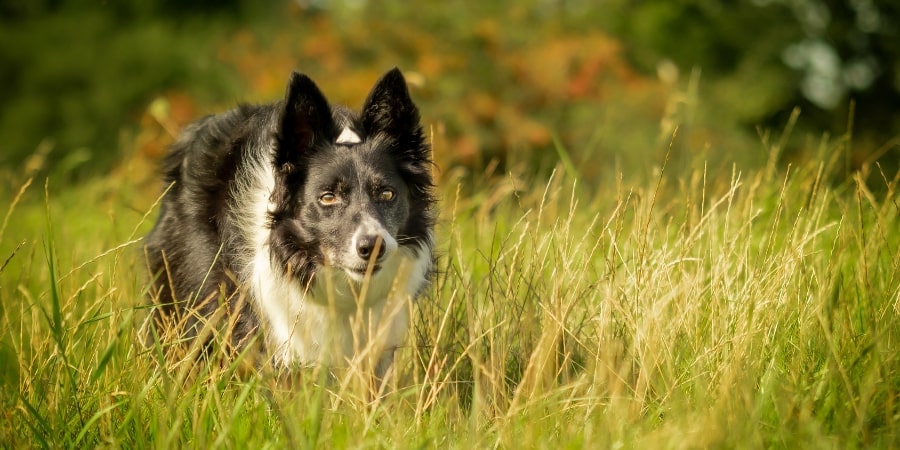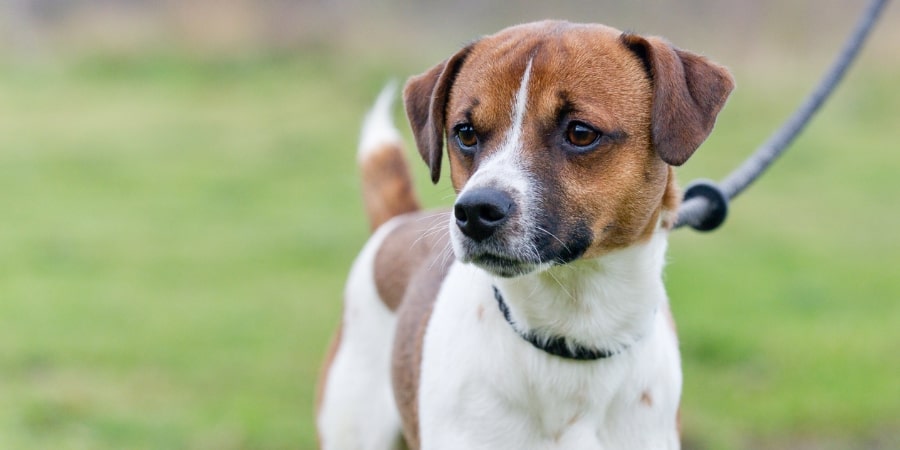Prey drive is a natural urge for many dogs. But sadly, in some circumstances, prey drive can lead to problems, accidents or injuries for your dog and other animals.
If you have a four-legged friend that’s always chasing squirrels or running after birds during walkies, read our advice on prey drive and how to help your dog stay safe.
What is prey drive?
Prey drive is the hunting instinct in animals, giving them the ability to catch food. You may have seen this when many dogs play — for example, chasing a ball, tugging games and ripping open stuffed toys. By channelling these behaviours into play, we can give them a safe release for their prey drive.
Prey drive is more of an issue for some dogs than for others. You may hear people say, “my dog has a high prey drive”, which means their dog is more likely to want to chase and catch animals like squirrels, mice or farm animals.
Which breeds have a high prey drive?

Common examples of breeds with a high prey drive include Greyhounds, Lurchers, Collies and Terriers. However, any dog breed can have a high prey drive, so it's essential to spot the signs and train your dog to help control their instinct to chase.
How do I train my dog not to chase animals?
The best way to stop your dog from chasing other animals is through training. If your dog has a high prey drive, it's important to take steps to stop your dog from accidentally hurting themselves or other animals. Here are some things you can do:
- Train your dog to “leave”. This command will often tell your pet not to pick up something, but it can also tell your dog not to run off. Make sure you say “leave” as soon as your dog spots something to chase. Then, reward your dog for giving their attention to you instead.
- Teach your dog recall. Training your dog to come back to you when you call is suitable for their safety. If your dog chases something, recall instructs them to come back to you. When they return, reward your dog with something they love, like a treat or a toy.
- Consistent training. Continue with positive, reward-based training throughout your dog’s life, not just when they’re a puppy. They need to remember your commands and realise these are more rewarding than chasing an animal.
- Distract your dog. Stay alert during walks so you can spot things your dog might want to chase before they do, then distract your pooch from the animal.
- Secure your garden. Ensure fences and gates are secure to help keep your dog safe and protect wildlife or other pets. Find how to create a pet-friendly garden.
- Keep them on a lead. During walks, please keep your dog on a lead so you have more control over them. But if you feel like you’re at risk of getting injured or being pulled over, let go.
- Muzzle train your dog. Wearing a muzzle will prevent your pooch from hurting other animals. Help them associate wearing the muzzle with positive experiences through muzzle training.
How do I stop my dog from chasing sheep or livestock?

Keep dogs under close control around livestock. It’s a crime to allow your dog to injure or kill a farm animal, and it could lead to severe penalties for you and your dog. If you’re concerned about your dog around sheep or other livestock, you can:
- Avoid livestock fields. Stick to alternative walks, for example, along canals or through woodland where you’re unlikely to find farm animals.
- Check for livestock. Before entering a field, check for livestock and try to find an alternative route to avoid them. Consider going back the way you came if necessary.
- Put your dog on a lead. If you can’t avoid livestock, put your dog on a short lead and keep as far away from farm animals as possible. Top tip: Carry a spare lead just in case it breaks or gets lost during the walk.
- Get your dog’s attention. Carry a tasty treat or a toy so you can keep your dog focused on you while walking through the field. Then, reward them when you reach the other side.
If your dog manages to get off the lead or the farm animal are chasing you:
- Move away. Ideally, leave the field while calling your dog to come with you. Make yourself as exciting and interesting as possible to encourage your dog to follow you.
- Don’t punish your dog. Try to move calmly and quickly to a safe area away from the animals, and don’t punish your pup when they come back to you.
